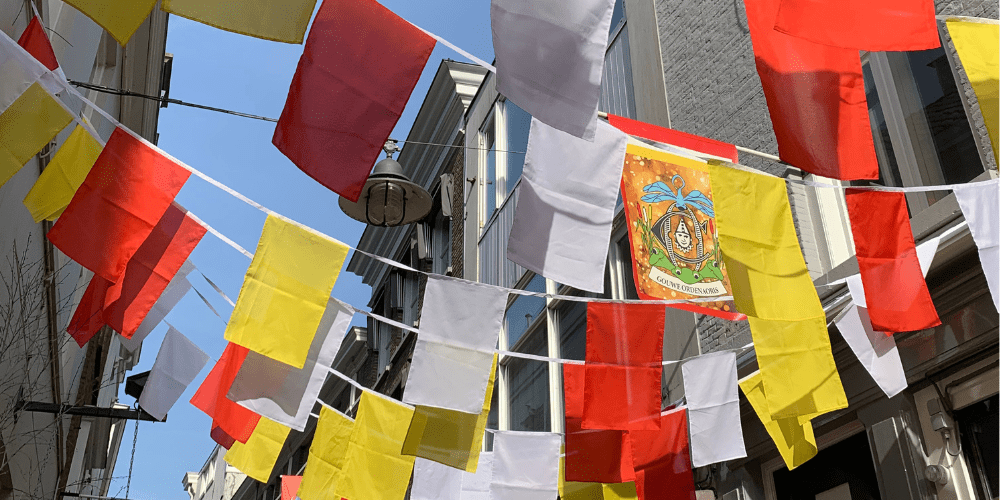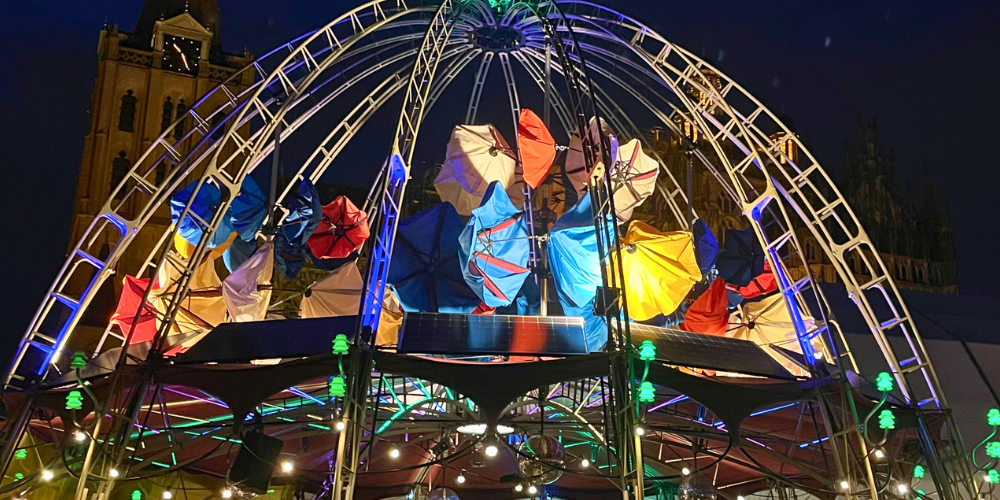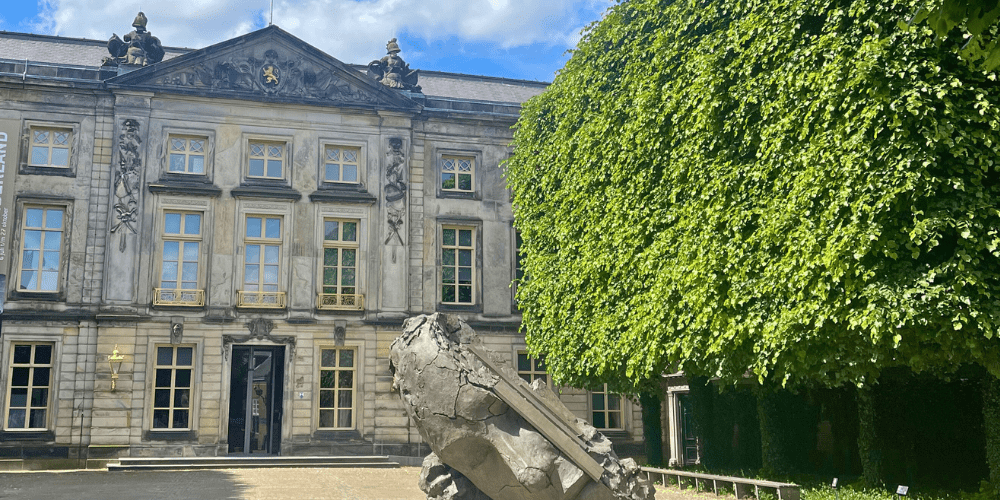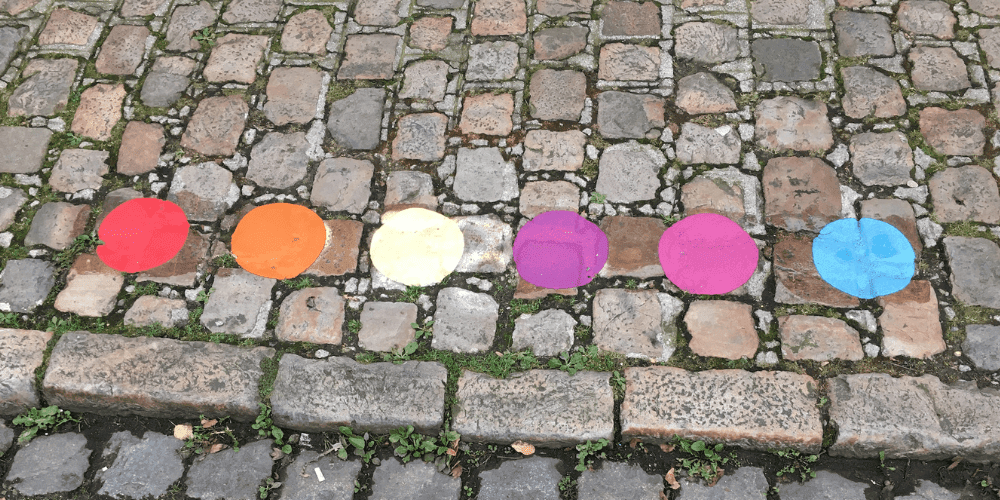If you are new to Den Bosch, you may have already heard something about carnaval a.k.a Oeteldonk. This article gives some additional information on this annual 3 to 5 days event and some tips to explore Oeteldonk for the first time.
Carnaval in Den Bosch
Carnaval is a festive season celebrated around the globe primarily in Catholic regions, marking the days leading up to Lent. In the Netherlands it is celebrated mainly in Brabant and Limburg.
During the carnival, cities usually change names and ‘s-Hertogenbosch becomes Oeteldonk. The name, in use since 1882 comes from the word "Oetel" that can refer to a frog, while "donk" refers to a dry elevation in a swampy landscape, highlighting the region's geography.
Carnaval usually takes place 6 weeks before Easter, from a Sunday to a Tuesday in February (early March the latest). But the spirit of Oetledonk progressively takes over the city in the weeks preceding for band rehearsals and preparations. The carnaval season actually officially starts on November the 11th at 11.11 precisely.
Amadeiro, emblem, flag, parades, Knillis and other traditions
Prince Amadeiro arrives in Oeteldonk on Sunday. He is welcomed by the Mayor of Oeteldonk or “Peer”, the Oeteldonk City Council and many Oeteldonkers. The Prince is the living symbol of carnaval and master of the festivities. Upon his arrival a parade accompanies him to the City hall and on Monday a big parade is organised in his honour across the whole city.
Participants wear traditional carnaval costumes, which usually includes a dark blue farmer’s jacket or black vest adorned with colorful emblems, a red, white, and yellow striped scarf (matching the Oeteldonk flag), and a variety of accessories featuring frogs. Every year, a new yearly emblem is designed to reflect the motto of the year and added by all Oeteldonker to their apparel.
Another key symbol is Knillis, a farmer statue representing the festivities. Each year, Knillis is revealed on the Markt at the start of the festivities and is ceremoniously “buried” at the end. On leap years, Knillis is joined by a statue of his wife Hendrien.
Music is a crucial part of Oeteldonk, with lively brass bands playing traditional and modern Carnaval songs throughout the city all day long and in bars in the evening.
Tips for new Oeteldonkers
Experiencing Oeteldonk and its many traditions for the first time can be a bit overwhelming, so we have compiled a few tips to help you.
First, it is important to realise that during carnaval, the regular life of the city stops. Bars and restaurants are closed (also a few days before to prepare) and the whole inner-city is the epicentre of the festivities which can get quite loud and busy.
Want to give it a try, then get your red white and yellow scarf, your carnaval jacket with its latest frog-emblems and join in! Note that the bars serve in reusable plastic cups throughout the city.
What I love the most about Oeteldonk is its many traditions, here is a selection of a few.
Sunday:
|
Prince Amadeiro's arrival Station - at 11.11 |
The festivities officially begin when Prince Amadeiro arrives at the train station, greeted by the Oeteldonk protocol and a massive crowd |
|
Intocht: Procession towards the city hall |
the Prince is accompanied - in music of course - through the city streets toward the main square. The procession ends by the Mayor of ‘s-Hertogenbosch passing the power over to the Peer and the Prince. |
|
unveiling of Knillis Markt - at 15.33 |
One of the most symbolic moments is the unveiling of Knillis on the Markt, with music and confetti of course. |
Monday:
|
optocht: the big parade afternoon |
a highlight of Carnaval, featuring creative floats, music, and humor that reflect the city's spirit. The different carnaval clubs compete for diverse prizes! Route in the centre: Hinthamerstraat, Parade, Verwersstraat, Achter het Stadhuis, Schapenmarkt, Markt |
Tuesday:
|
Burial of Knillis Markt - at 23.55 |
On the last day of carnaval, the statue of Knillis is ceremoniously buried, signalling the end of Carnaval and a return to everyday life. The motto of the following carnaval season is announced right after. |









